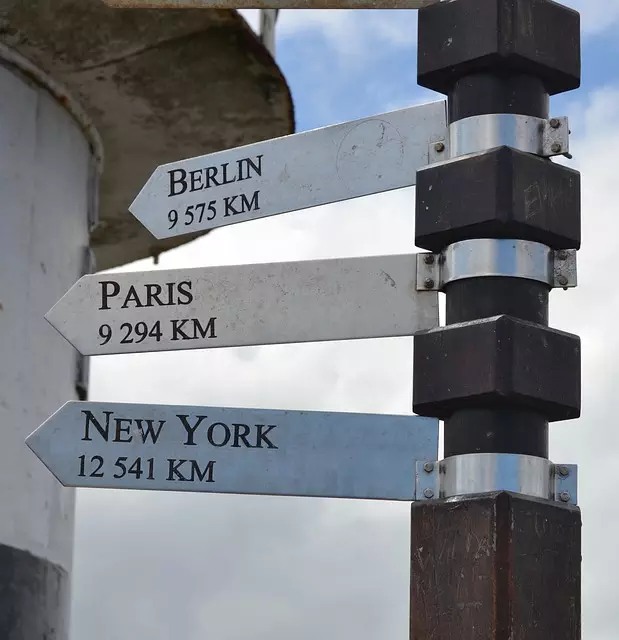Drilling Fluids Revolutionize Horizontal Directional Drilling & Trenchless Tech
Horizontal Directional Drilling (HDD) is a trenchless technology enabling efficient underground inst…….
Introduction
Understanding the intricacies of “Directional Boring Toledo” is crucial for grasping its role in modern infrastructure development. This article delves into the multifaceted aspects of directional boring, a technique pivotal to the installation and maintenance of underground utilities in urban and rural settings, with a particular focus on Toledo, Ohio. We will explore its historical significance, technological advancements, economic impact, policy frameworks, and future prospects, providing readers with a comprehensive understanding of this essential practice.
Understanding Directional Boring Toledo
Directional boring, often referred to as horizontal directional drilling (HDD), is a steerable trenchless method of installing or repairing underground pipes, cables, or conduits with minimal disruption to the surface. In Toledo, this technique has become indispensable for maintaining its intricate network of utilities without compromising the city’s infrastructure and aesthetic appeal.
The core components of directional boring include a drilling rig, drill bit, mud rotary system, surveying equipment, and guidance tools. These elements work in harmony to navigate subterranean pathways with precision. The historical context of directional boring in Toledo reflects its evolution from a niche technique to a standard practice for utility installations, demonstrating the city’s commitment to sustainable and efficient infrastructure development.
Global Impact and Trends
Directional boring has a global impact, influencing how utilities are installed across continents. The technique’s popularity is on the rise due to urbanization, environmental concerns, and technological advancements. In regions like North America, Europe, and parts of Asia, directional boring is a staple in municipal and industrial projects, reflecting its growing significance worldwide.
Key trends shaping the trajectory of directional boring include the adoption of more environmentally friendly practices, the integration of smart technology for enhanced precision, and the expansion of its applications beyond pipelines to include electrical and communication cables. The global impact is evident in the increased demand for skilled operators and the continuous improvement of drilling equipment.
Economic Considerations
The economic aspects of directional boring are multifaceted. In Toledo, it contributes to job creation, fosters local economies, and reduces costs associated with surface disruptions and post-construction repairs. Market dynamics in the sector are influenced by technological advancements, regulatory changes, and shifts in demand due to infrastructure projects.
Investment patterns in directional boring equipment and training programs indicate a bullish outlook for the industry, with significant capital flowing into innovation and capability development. The role of directional boring in economic systems is critical, as it enables efficient resource allocation and supports sustainable development goals.
Technological Advancements
Technological advancements have revolutionized the field of directional boring. Innovations such as steering systems with GPS capabilities, real-time monitoring technologies, and enhanced drilling fluids have greatly improved the precision and efficiency of HDD operations. These advancements not only reduce environmental impact but also extend the feasible reach of subsurface installations.
The future potential of these technologies lies in their continued development to navigate complex geological formations, detect subsurface utilities to avoid conflicts, and integrate with smart city infrastructure. The potential for real-time data analysis and predictive maintenance is a frontier ripe for exploration.
Policy and Regulation
The policies and regulations governing directional boring in Toledo are shaped by both local and federal guidelines. These frameworks ensure environmental protection, safety standards, and fair labor practices. The Ohio Underground Facilities Installation Code (OUFIC) is a key regulatory element that dictates the installation and maintenance of underground facilities statewide.
Legislative measures also address the proper disposal of drilling fluids and the certification of operators to ensure the highest standards in the industry. Compliance with these regulations is critical for the continued growth and acceptance of directional boring as a sustainable infrastructure solution.
Challenges and Criticisms
The challenges faced by directional boring include technical limitations, environmental concerns, and the high cost of advanced equipment and training. Critics argue that while HDD minimizes surface disruption, it can still pose risks to existing subsurface utilities if not executed with precision.
Actionable solutions to these issues involve investing in research and development for more efficient drilling methods, enhancing environmental safeguards, and fostering public-private partnerships to offset the financial barriers. Collaboration between industry stakeholders, regulatory bodies, and academic institutions is essential to address these challenges head-on.
Case Studies
Several case studies exemplify the successful application of directional boring in Toledo. One such example is the installation of a major water line under the Maumee River, which was completed with minimal environmental disturbance and on schedule. Another case study highlights the resolution of a complex drainage issue in a densely populated neighborhood, where HDD allowed for the installation of new drainage pipes without disrupting residential life.
These case studies underscore the versatility and reliability of directional boring as a solution to complex underground infrastructure challenges. The lessons learned from these projects inform best practices and contribute to the evolution of the industry.
Future Prospects
The future outlook for directional boring in Toledo and beyond is promising. Potential growth areas include the expansion of HDD applications, such as the installation of high-speed internet infrastructure and the development of renewable energy resources like wind and solar farms. The integration of smart technologies with HDD capabilities will likely drive innovation and efficiency.
The industry’s commitment to sustainability, coupled with technological advancements, positions directional boring as a key player in modern infrastructure development. As cities continue to grow and evolve, the role of directional boring will become increasingly significant.
FAQs
What is directional boring?
Directional boring, also known as horizontal directional drilling (HDD), is a method used to install or repair underground pipes, cables, or conduits with minimal disruption to the land above.
Why is directional boring important in Toledo?
Directional boring in Toledo is crucial for maintaining its infrastructure without compromising the city’s aesthetic appeal or disrupting daily activities. It allows for efficient installation and repair of utilities beneath roads, waterways, and other sensitive areas.
What are the main challenges associated with directional boring?
The main challenges include technical limitations, environmental concerns, high equipment and training costs, and the risk of damaging existing underground utilities if not executed with precision.
How do regulations impact directional boring?
Regulations such as the Ohio Underground Facilities Installation Code (OUFIC) ensure environmental protection, safety standards, and fair labor practices, influencing how directional boring is conducted in Toledo.
What are some successful case studies of directional boring in Toledo?
Case studies include the installation of a major water line under the Maumee River and the resolution of a complex drainage issue in a densely populated neighborhood, both completed with minimal environmental disturbance.
What does the future hold for directional boring?
The future of directional boring is optimistic, with potential growth in applications like renewable energy infrastructure and smart city technology integration. Continued advancements in technology and a commitment to sustainability will further its importance in modern infrastructure development.

Horizontal Directional Drilling (HDD) is a trenchless technology enabling efficient underground inst…….

Directional drilling, particularly Horizontal Directional Drilling (HDD), is a transformative trench…….

Directional boring and trenchless technology, including Horizontal Directional Drilling (HDD), have…….

Horizontal Directional Drilling (HDD) is a trenchless technology transforming public utility project…….

Advanced HDD software tools have revolutionized directional boring and Horizontal Directional Drilli…….

Directional Boring Toledo (HDD) is a trenchless technology revolutionizing urban construction by dri…….

Trenchless technology, utilizing methods like Horizontal Directional Drilling (HDD) and Directional…….

TL;DR:Directional Boring Toledo and Trenchless Technology revolutionize excavation by offering preci…….

Horizontal Directional Drilling (HDD), a trenchless technology, is revolutionizing urban infrastruct…….

Directional boring, or Horizontal Directional Drilling (HDD), is a trenchless technology that has tr…….